08 October 1999:
First, all the body
scripts were sanded off on the sides. Small holes were drilled where
they
were to be fastened to the body. Then the right door was cut off. |

|
| The internal tub
also had its share: The side was cut off and the door trim panel
separated. |
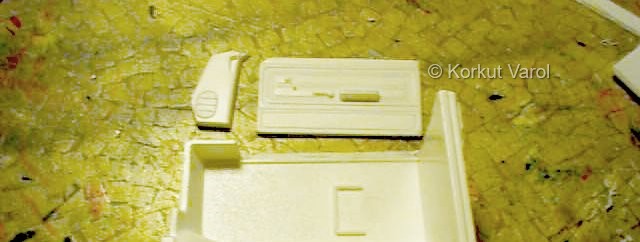
|
| Putting the internal
panel on the door, profiles were taken for the circumferential filler
panels,
and these were made from sheet styrene. A 1 mm thick brass wire was
bent
to proper shape, with a little try-and-see method, and housings were
drilled
on the door panel to hold the door on the hinge(left). Then the hinge
was
fixed in its permenant position on the A-post. The hinge housing was
scratchbuilt
from thick sprue. |
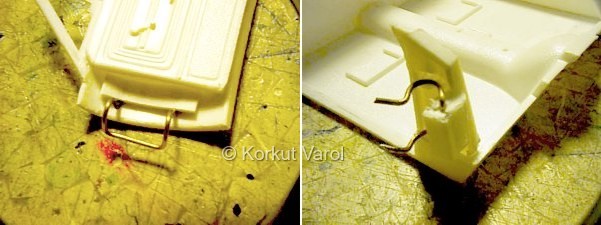 . .
|
11 October 1999:
For
sure, that vehicle
would never look like as it was in the gallery. It would have a major
dent
on the left fender, and smaller ones here and there. For the fender,
The
solution was resin. For the mold, aluminum foil was used to copy the
contours
of the part. |
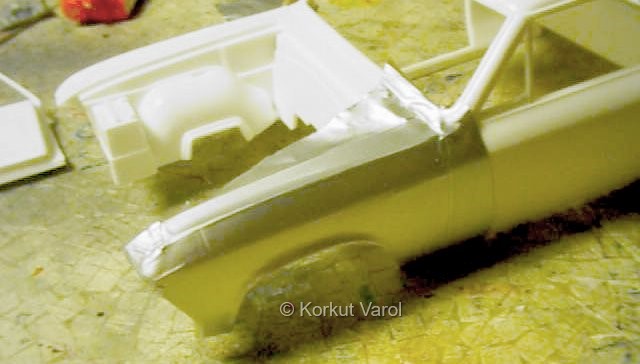
|
| Then the foil was
given a dent. This was used for the resin mold. |
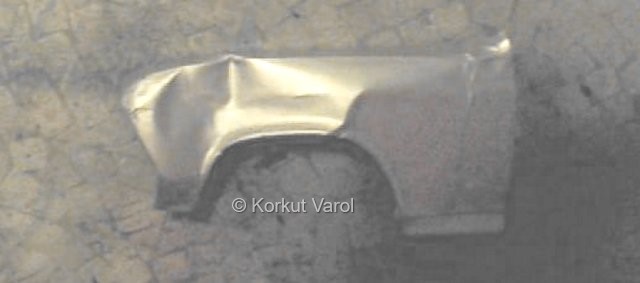
|
| After
the resin
cured, the foil was stripped off. |
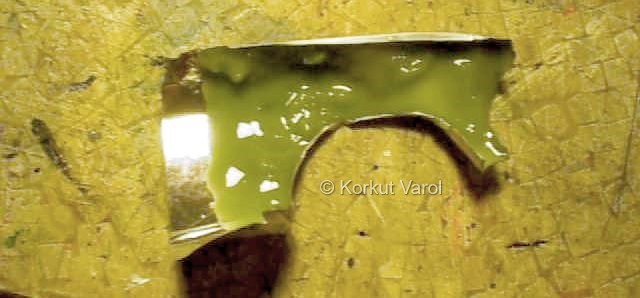
|
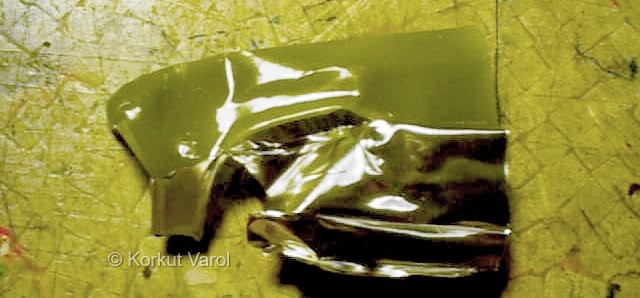 |
| Then the left fender
was taken out..... |
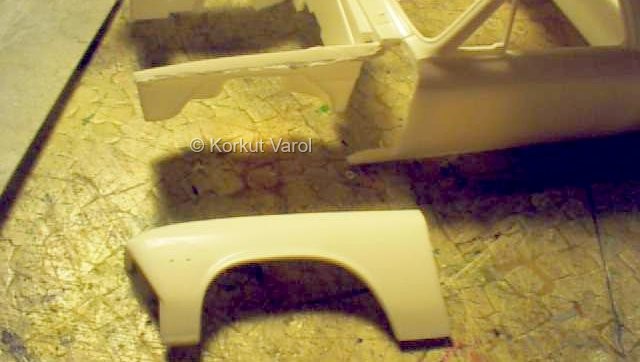
|
| ....and the dented
resin fender put in with epoxy glue. |
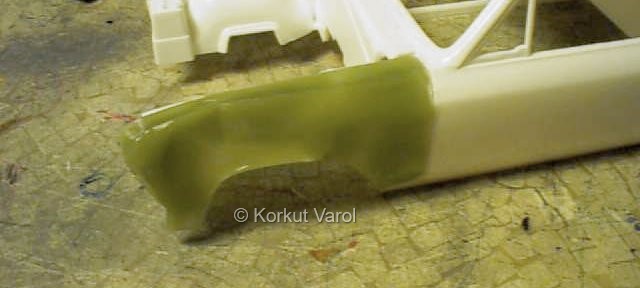
|
| The dent on the
rear right panel was made by heating the plastic and rubbing another
model
car in a unidirectional way. |
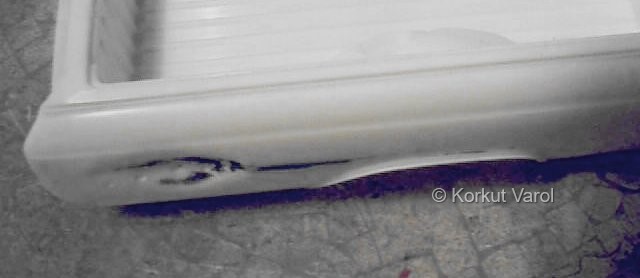
|
| This dent was also
made by heating the plastic and pressing the back of a pencil. |

|
| For the inside of
the rear lid, foil copying method was used again and a resin dented lid
panel was done as with the fender. |
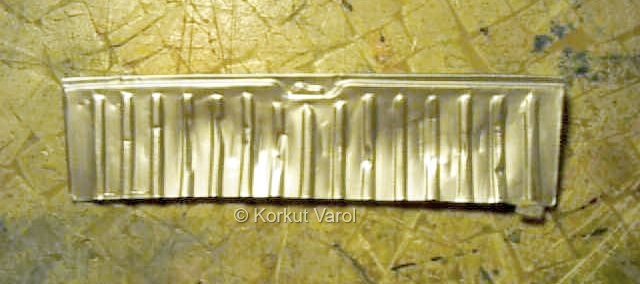
|
| The inner lid panel
was put into place with epoxy glue, and the upper mating surfaces were
treated with automotive polyester putty, and sanded to shape. |
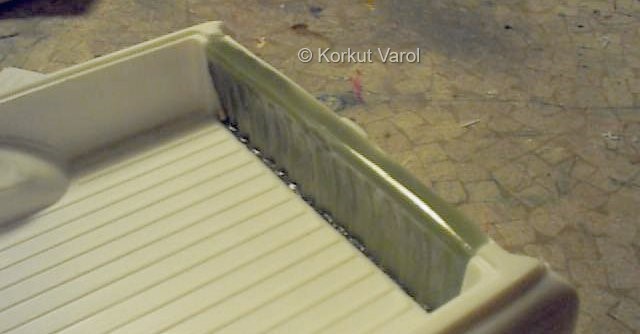
|
14 October 1999:
Since the rear axle
would have tandem wheels, they would extend beyond the body. So,
extensions
were needed to cover the wheels. And since, with the suspension, the
wheels
would hit the fender, the body panels were cut to the wheel housing
profile. |
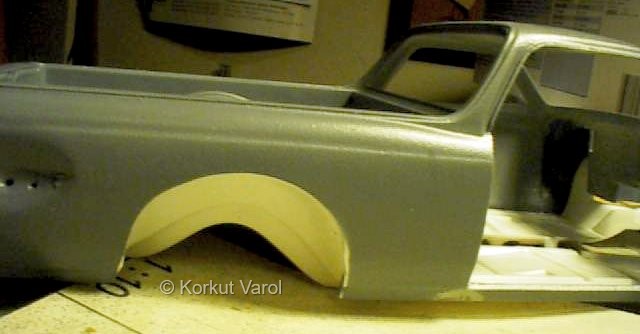
|
| Now the extensions
were made from styrene sheet and put on. Does not look very aesthetic,
and the owner was not a man to care about it.... |
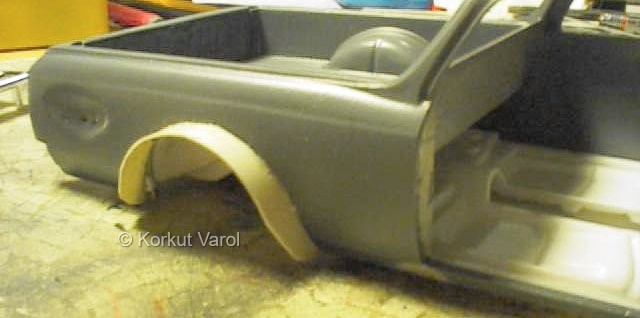
|
................
|

|



